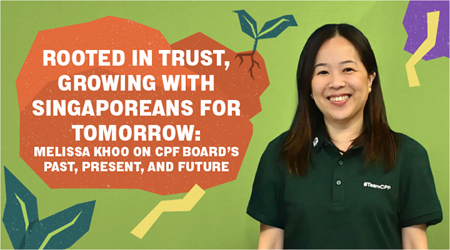Old Is Gold: 5 Iconic Landmarks That Represent Singapore’s History
You may have passed by these buildings while exploring the city, but did you know they are also national monuments?
The National Heritage Board gazettes buildings and sites based on their historical and architectural significance. These sites either have clear ties to nation-building or are locations where communities held nationally significant events. As such, they are protected and preserved by the state.
To commemorate Singapore’s 59th National Day, Challenge presents five iconic landmarks representing different facets of the city-state’s history and tips on how to get the best celebratory shot.
1. The Padang
The Padang is an iconic landmark for many Singaporeans, young and old, and is famously recognised as a key location for our annual National Day Parade (NDP).
The Padang is associated with Singapore’s many “firsts”. Notably, the installation of our first head of state, Mr Yusof Ishak, was held here in 1959, as was the very first National Day Parade on 9 August 1966.
How To Get The Best Picture
Beyond the large green field, you can also capture scenic shots of the Padang’s surrounding buildings, such as the National Gallery on one side and Marina Bay Sands on the other.
Photography tip: To capture the grandeur of the Padang and its surrounding buildings, zoom out (try 0.5x!) with your phone camera for a wider shot.
2. Jurong Town Hall
A symbol of Singapore’s industrialisation in the 1960s, the Jurong Town Hall represents a different side of Singapore’s history.
From 1974 to 2000, this building served as the original headquarters of the JTC Corporation (previously known as the Jurong Town Corporation), a specialised agency that developed and managed all industrial estates.
The Jurong Town Hall was also the site of many key events that strengthened Singapore’s bilateral ties with other countries, including the first international tea auction held outside London in 1981.
Today, the national monument houses the Trade Association Hub, which offers shared facilities to promote collaboration among 25 Trade Associations and Chambers in Singapore.
How To Get The Best Picture
The Jurong Town Hall building is recognised for its unique shape and is one of Singapore’s famous brutalist buildings. It is said to resemble a ship’s hull or a submarine.
Photography tip: Position yourself such that there is greenery, like flowers, in the foreground (the section closest to the camera), to form a contrast with the building's clean, sharp edges.
3. Central Fire Station
If you are roaming around the City Hall area, there’s a good chance that the Central Fire Station, a building the colour of a fire engine, has caught your eye.
This national monument is Singapore’s first and oldest fire station. From here, firefighters were dispatched to respond to various national emergencies and rescue operations, including the Bukit Ho Swee fires in 1961 and the tragic collapse of Hotel New World in 1986.
Today, the fire station is still in operation and also houses the Civil Defence Heritage Gallery, the official museum of the Singapore Civil Defence Force (SCDF).
How To Get The Best Picture
The Central Fire Station's bold red exterior makes it a great location for an Instagram-worthy photo, with or without photo filters. With its retro design and prominent red typeface, it’s not hard to capture this unique vibe.
Photography tip: If you want your photo to look like something straight out of a Wes Anderson movie, photograph the station from the front, paying attention to the building’s symmetry in your photo. For bonus points, get someone to pretend they are walking past the station.
4. The Singapore General Hospital (SGH) Museum
While Singapore is home to numerous unique museums, the SGH museum is a hidden gem that represents its rich medical history.
The Singapore General Hospital (SGH) is the city-state’s first general hospital and oldest medical institution, which started as a humble wooden shed in a British military camp in 1821. Located at the Bowyer Block on the SGH Campus, the museum serves as a time capsule of the hospital’s evolution.
The museum contains more than 200 years’ worth of artefacts and records, documenting key events that occurred in the hospital, including the assistance provided to the wounded in the Spyros disaster in 1978.
How To Get The Best Picture
Among the modern blocks within the hospital grounds, the SGH Museum stands out as a neoclassical building with a distinctive clock tower.
Photography tip: Position yourself at an angle (stand slightly off-center or to the side to get a more dynamic perspective) and tilt your camera slightly upwards to capture the grand scale of the clock tower. Taking the photo at dusk when the lights turn on will also add a nice contrast to the picture!
5. Old Hill Street Police Station
Known for its iconic rainbow-coloured windows, the Old Hill Street Police Station is another national landmark Singaporeans and tourists are familiar with. However, few know that this location is a national monument and is home to one of Singapore’s oldest government organisations.
Nicknamed the “Police Skyscraper” in the past, the Old Hill Street Police Station was simply known as “Hill Street Police Station”. It was the largest police station in the 1930s, with six storeys and over 900 windows contributing to the grand nature of the building.
Although it is no longer an operating police station, since 1983, it has become home to many departments in the Public Service. Today, it houses the offices of the Ministry of Digital Development and Information (MDDI) and the Ministry of Culture, Community and Youth (MCCY).
How To Get The Best Picture
While it may be impossible to capture all 927 windows, capturing all seven colours in your photo makes for an aesthetic shot worthy of a museum.
Photography tip: Getting a beautiful shot is easy: stand on the pavement opposite the building, position yourself at the centre of your camera lens, and you’re all set!

Want to get more stories like this? Join our Telegram channel: https://t.me/psdchallenge.
- POSTED ON
Aug 1, 2024
- TEXT BY
Jayme Teo
- PHOTOS BY
Mandy Ong









